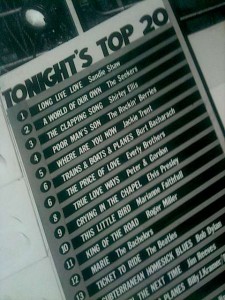It is an often repeated aim or aspiration of schools, to 'develop the leaders of tomorrow' or some similar refrain. This seems to me to be usually met by creating 'posts' that students can hold where they weld some sort of responsibility to a house, or class or team. But by their very nature, these posts are exclusive and not each child has an opportunity to lead in this formal respect. Often, they are leading a competitive group, which I believe misses out on developing some of the most important leadership skills, truly collaborative ones.
 |
For many years in my class teaching I have placed particular emphasis on students becoming 'independent'. What I wanted from that was for them to take their learning into their own hands, to make decisions based on their experience on what the most useful route would be for them to take. To have confidence in their own abilities, to know what works best for them and to make good choices and decisions. Now as a classroom is a learning environment, I expected them to make mistakes, and this was developed as a natural part of learning.
But recently I have decided that I want to rebrand my emphasis. Independent is good, but it focuses students' attention on the individual. I am now beginning to realise the power of leadership within groups to collaborate and work together, independently of outside guidance, to achieve greater things than any individual could on their own. Now, as always, I realise this is nothing new. But it is a change I want to instigate in my work this year.
 |
All of my students will be expected to lead either 'loudly' (active) or 'quietly' (passive). They will all make decisions which affect the classes' progress as a whole. We will be a team together. I will expect them to notice when something needs doing in class, and I will expect them to act upon it. If a student recognises they need help, as a leader they need to seek it from the most appropriate source, which will often not be me. If a student recognises someone else needs help (even me!), as a leader, they will offer it.
My job is to facilitate this environment where every student is responsible for the progress of the class, themselves and of each other. When they learn something, discover a new way to achieve something, make a mistake and adapt or find a solution to a problem, I expect them to share it. They will need to decide the best way to share it, and the best time. Most often it could be instantaneously by interrupting the class to share so everybody can benefit immediately, or it could be at the end of the session, or the start of another. This caring about the needs of the collective, making decisions to benefit all, and taking responsibility for the progress of all, this will be the beginning of developing true collaborative leaders in my class.
Key points for my class to know this year;
- Leaders notice things, think carefully and act.
- Leaders recognise their mistakes, and reflect and improve.
- Leaders share their expertise.
- Leaders know when to follow.
- Leaders ask questions and take every opportunity to learn.
- Leaders support each other with recognition and praise.
- Leaders support each other through observations and suggestions to improve.
- Leaders empower themselves, and others, to improve.
- Leaders care about each other.
















